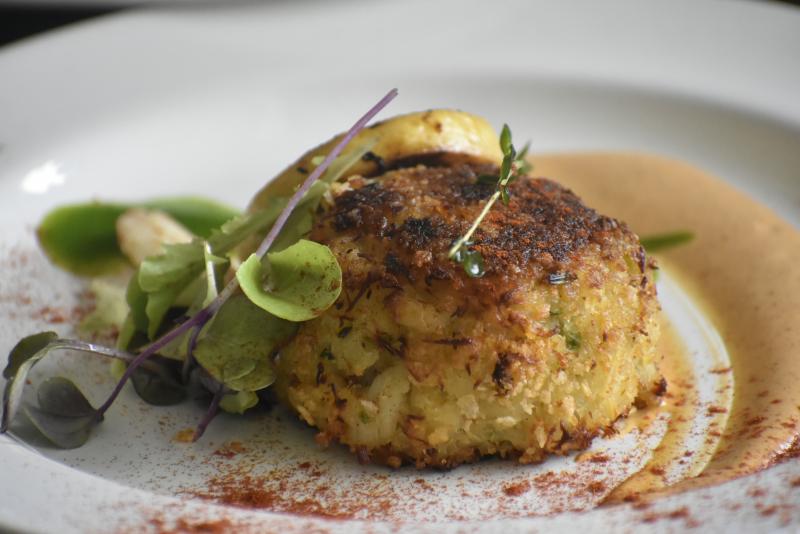/green-shore-crab-attacking-limpet-502804916-7372a7a9691249c39e128ebebb0420da.jpg)
The green crab is an invasive aquatic species found on both the Eastern and Western coasts of the United States. Native to the northeast Atlantic seaboard from Norway to Mauritania, this crab has made its way around the world over the last 200 years, traveling along with cargo ships and traders into new ports and establishing populations in several different countries.
The green crab is a problematic invasive species because it alters the function and organization of the different marine habitats it enters, including intertidal rocky shores, intertidal mudflats, marshes, and eelgrass beds. This crab is also capable of reducing biodiversity and altering food webs. There is evidence that green crabs have reduced populations of native clams in New England, and also harmed other commercially important bivalves including the scallops and quahogs.
How to Identify a Green Crab
Adult green crabs have mottled shells, usually dark brown or green in color, that reach around 3 to 4 inches in width. They are sometimes misidentified as native species including juvenile Dungeness and helmet crabs, but can be distinguished primarily by a set of five triangular teeth, or spines, evenly spaced between the eyes and the widest part of the shell on either side.
As our climate changes, this species will continue expanding into new environments, being tolerant of a wide range of hot and cold temperatures, according to research published in the Journal of Experimental Biology.
How the Green Crab Became an Invasive Species
Green crabs (Carcinus maenas) are also called European green crabs in Canada and the United States, while in the British Isles they're typically referred to as shore crabs or green shore crabs. They were first documented on the East Coast in the early 19th century, one of at least two genetically distinct lineages of green crabs independently introduced in North America. (The second was introduced in the late 20th century). It is likely that one of these lineages came from warmer native waters, while the other was native to cooler, northern environments.
Both of these lineages of green crab eventually made their way to eastern Canada and hybridized, creating a point of contact in Nova Scotia. In that location, scientists found that the mean high temperature at which cardiac function fails in adult crabs is consistently higher in southern populations, which are adapted to overall warmer sea surface temperatures. This indicates that green crabs are highly adaptable and change genetically to accommodate different native and non-native aquatic environments.
Initial introductions of the green crab to the East Coast came from ships arriving in New England from European waters, likely releasing ballast water (water stored in a ship's hold to provide needed weight) carried from overseas that contained the crabs or their larvae. It is also likely that green crabs arrived to new areas in packing materials as well as shipments of live seafood.
The crab's West Coast introduction may have occurred via boxes of live fishing bait in San Francisco. Once these crabs enter the water, their tiny larvae disperse widely and are almost impossible to detect and remove.
Problems Caused by the Green Crab
The green crab has had a wide-reaching impact on the United States' coastal waters since its introduction. Significant losses to commercial fisheries and natural ecosystems have been documented in waters where the crab now resides, including decreased populations of clams, scallops, quahogs, and other native crab species.
These crabs have a wide variety of food preferences, and their ability to out-compete native species for food resources, high reproductive capacity, and wide environmental tolerances lend them the capacity to fundamentally alter community structure in coastal ecosystems. In Canada, for example, the aggressive green crab has been dubbed the "cockroach of the sea," and is known for completely mowing down eelgrass beds, a valuable ecosystem and food source for many species. There is also evidence of a cascading impact on broader fish communities where green crabs are present.
Complicating any understanding of the full scope of the impact of the green crab has been the more recent arrival of Asian shore crabs, thought to be displacing green crabs in some East Coast aquatic environments and also threatening native crabs and other species in the region. More research is required to fully understand the impact of these different invasive species interacting in the same environments.
Efforts to Curb Environmental Damage
Green crabs established along the East Coast long before invasion biology was a science, and the ability of their small eggs to be dispersed through tidal currents means that even new populations are difficult to control. That said, there have been efforts to trap crabs in Washington state as well as eastern Canada, and catch rates of green crabs declined in areas where government officials attempted to limit the population. These types of mitigation efforts are likely to have more success in areas in which the crab is newly present.
Like with many other invasive species, some advocates are working to create a market for the crab by advertising its culinary appeal — in Italy, this crab is considered a delicacy. The Green Crab Cookbook, released in 2019, has instructions on how to clean and prepare the crab, as well as dozens of delicious recipes, as part of a mission to educate Americans on the green crab's appeal.
The Link LonkMarch 22, 2021 at 11:33PM
https://ift.tt/3tPxG5T
Invasive Species: Green Crab - Treehugger
https://ift.tt/2MkGRbk
Crab

No comments:
Post a Comment